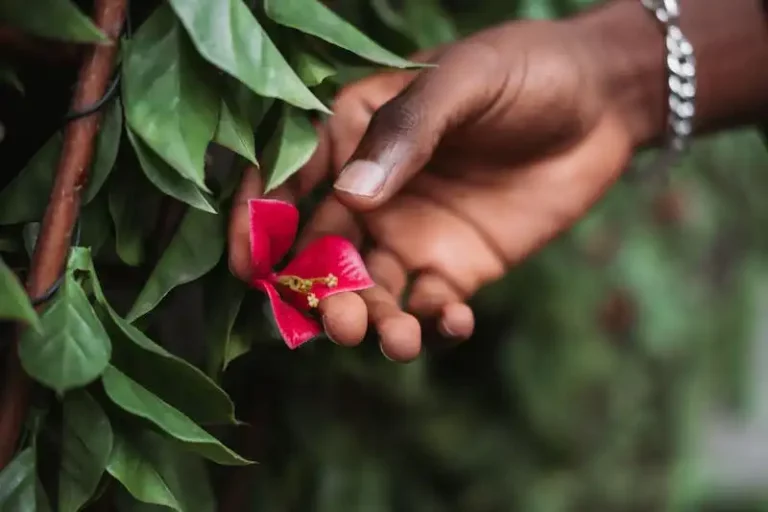For gardeners living at northern latitudes, growing onions during the winters can be a challenging task. However, with the right techniques and proper planning, it is entirely possible to successfully grow onions throughout the cold winter months. One option is to start with seedlings in the fall and grow them in a greenhouse.
Heirloom varieties tend to be more adaptable to winter conditions, including lower temperatures, fluctuating daylengths, and frost. Additionally, the specific growing conditions in your area can impact how well onions fare overwinter, so it’s important to understand the local climate.
One common problem encountered when growing onions during winter is bolting, which is the premature production of a flower stalk. Bolting is triggered by changes in daylength and temperature, so it’s important to select onion varieties that are more resistant to bolting.
Another approach to growing onions over winter is to plant them in the late summer or early fall. The goal is to allow them to establish their root systems before the ground freezes. These onions can then be harvested in the spring, providing a flavorful addition to your meals.
In trials conducted at various locations, both small and larger-scale plantings of onion types, including scallions and bunching onions, were successful in overwintering. Some of the recommended onion varieties for overwintering include Bridger, Johnny’s Fall & Winter Collection, and Walla Walla. These varieties exhibited good harvestability and bolting resistance.
While overwintering onions can be a little challenging, with some careful planning and attention to detail, you can enjoy a bountiful harvest of onions even during the coldest months. So why not give it a try and provide your family with fresh, flavorful onions straight from your own garden?
Overwintering Onions for Spring Harvest
When it comes to growing onions over winter, there are a few techniques you can try to ensure a successful spring harvest. Overwintering onions refers to the process of planting onion bulbs in the fall and allowing them to grow throughout the winter months, with the goal of harvesting them in early spring before they begin to bolt.
One method you can try is to plant onion sets, which are small, partially grown onions, in the fall. You can find onion sets at your local garden center or order them online from a trusted internet source like Johnny’s Selected Seeds. Planting onion sets allows you to skip the tedious task of starting onions from seed.
Another option is to plant onion seeds in the fall and provide them with some shade. By sowing onion seeds in the fall and covering them with a light layer of shade cloth or using a shade structure, you can protect the young seedlings from frost and ensure they have a head start going into winter. However, keep in mind that this method may vary depending on your specific climate and growing conditions.
It’s also important to note that overwintering onions may not be suitable for all varieties. Some onions, like red varieties, tend to bolt more easily, while others, like yellow or white varieties, tend to be more bolt-resistant. If you choose to overwinter onions, make sure to select a variety that is known for its ability to withstand colder temperatures and has a lower tendency to bolt.
During the winter months, your overwintered onions may produce smaller leaves or show signs of blight. This is generally normal and not something to be overly concerned about. The main goal of overwintering onions is to ensure they survive the winter and start growing vigorously in the spring.
In the spring, you can harvest your overwintered onions by simply pulling them out of the ground, just as you would with onions grown from spring-sown bulbs. However, keep in mind that the size of the bulbs may be smaller compared to onions grown from spring planting. The exact results may vary depending on the specific variety and the conditions encountered throughout the winter.
To increase your chances of a successful harvest, it’s recommended to follow specific recommendations for your area and the variety of onion you are growing. This could include adjusting the timing of planting, providing additional protection against severe winters, or selecting a variety known to perform well in your region.
In conclusion, overwintering onions for spring harvest can be a rewarding and time-saving technique. By choosing the right variety, providing appropriate care, and following recommendations from reliable sources, you can enjoy a bountiful onion harvest in the spring.
Recommendations from Johnny’s Onion Overwintering Trials
Johnny’s conducted overwintering trials on various onion types to determine the best methods for growing winter onions. The aim was to offer growers recommendations for successfully growing full-size onions during the coldest months of the year.
In general, winter onions can be grown by sowing seeds in the fall, generally between September and November, depending on the region and the expected frost dates. It is important to sow them early enough for the plants to establish a good root system before the temperatures start falling significantly. The mild temperatures of late fall and early winter encourage root growth while the foliage remains dormant.
Some types of onions, such as Bridger or Dakota, are particularly well-suited for overwintering as they are bolt-resistant and have good harvestability. Winter onions should be harvested in the spring after the leaves start rising, but before the bulb forms a seed stem.
The timing for planting winter onions varies depending on your zone and latitude. It’s important to consult local resources or use a Google search for the specific recommendations for your area. However, a general rule of thumb is to plant winter onions around the same time you would plant spring-sown onions.
In terms of onion sets, they can also be overwintered. If you choose to use sets instead of seeds, plant them within the same timing and favorable conditions mentioned above. However, sets will usually result in smaller onions compared to those grown from seeds.
It’s also worth noting that although winter onions are generally more resistant to diseases like Botrytis, the risk of issues like bolting and death caused by extreme cold or fluctuating temperatures still exists. In particularly harsh conditions, it is sometimes recommended to protect plants with row covers or low tunnels.
When it comes to growing bunching onions overwinter, the process is similar. However, these onions are typically smaller and can be harvested earlier. Bunching onions can be sown in the fall or early winter for a spring harvest.
In conclusion, growing winter onions requires careful timing, choosing the right onion varieties, and providing favorable conditions for their growth. By following the recommendations from Johnny’s Onion Overwintering Trials, growers can enjoy a bountiful onion harvest even in the coldest months of the year.
| Recommended Onion Types |
|---|
| Winter Onions |
| Bunching Onions |
| Yellow Onion |
ON THIS PAGE
- Overview
- Choosing the Right Onions for Overwintering
- Sowing and Seeding
- Harvesting and Storage
- Overwintering Methods
- Additional Resources
Onions are a popular crop for many gardeners, and with the right techniques, it is possible to grow onions over winter. This section will provide an overview of overwintering onions and the methods used for successful cultivation.
Overview
Overwintering onions involves planting onions in the fall season and allowing them to grow slowly during the winter months. By overwintering, growers can achieve larger onions with more flavor. The process starts with choosing the right onion variety and sowing or seeding the bulbs in the fall.
Choosing the Right Onions for Overwintering
When selecting onions for overwintering, it is important to choose varieties that are specifically bred for winter growing. These onions are usually more tolerant of cold temperatures and have a longer growing season. Heritage and heirloom varieties are often recommended for overwintering. It is also important to choose varieties based on your region’s climate and the length of your winter months.
Sowing and Seeding
The process of sowing onions for winter growing begins in the late summer or early fall. The seeds are sown in well-prepared beds and left to grow before the first frost. Alternatively, onion sets can be planted in the fall for overwintering. Sets are small onion bulbs that were grown from seed the previous spring or summer. They are usually brought to full-size in the fall before being planted for overwintering.
Harvesting and Storage
In the spring, as temperatures rise and the days start to lengthen, the overwintered onions will start to grow again. By late spring or early summer, the onions will be ready for harvesting. It is important to harvest the onions before they start to form flowers or seed heads, as this can lead to smaller bulbs. After harvesting, the onions should be stored in a cool, dry place for future use.
Overwintering Methods
There are several methods for overwintering onions, including using a polytunnel or greenhouse, mulching with straw or leaves, or using row covers for protection. These methods provide added insulation and protection for the onions during the cold winter months, increasing their chances of survival. Experiment with different methods to find the best solution for your garden’s climate.
Additional Resources
For more information on overwintering onions, refer to the following additional resources:
- Online gardening forums and communities
- Books and publications on winter gardening
- Local gardening clubs and organizations
- University agricultural extension programs
Sowing Transplanting Goal Onion Seedlings with 4–5 Leaves
Sowing onion seedlings with 4-5 leaves is an important step in the process of growing winter onions. It allows for the successful transplanting of the seedlings into the garden for further growth and development. Here are some steps to follow:
- Prepare the soil: Before sowing the seedlings, make sure the soil in the garden is well-prepared. Remove any weeds or debris and loosen the soil to allow for proper root development.
- Start with bunching onions: For trials and later transplanting, it is recommended to start with bunching onions. These are onions that can be harvested earlier than full-size onions and are often used for scallions.
- Sow the seeds: Sow the onion seeds in a well-spaced manner, leaving enough room between the onions for growth. Follow the recommendations on the seed packet for the appropriate spacing.
- Transplant the seedlings: Once the onion seedlings have 4-5 leaves, they are ready to be transplanted into the garden. Dig holes in the prepared soil and carefully transfer the seedlings, making sure to space them out properly.
- Provide favorable conditions: Onions prefer full sun and well-drained soil. Make sure the garden bed is located in an area that receives at least 6-8 hours of sunlight each day. Water the seedlings regularly to keep the soil moist but not waterlogged.
- Watch for pests and diseases: Keep an eye out for common onion pests and diseases, such as onion thrips and onion blight. Take preventive measures to protect the seedlings and treat any issues promptly.
- Harvestability: As the onion plants grow, they will start to produce larger bulbs. Harvest the onions when they reach the desired size, usually indicated by the foliage starting to fall over. Avoid waiting too long, as this can result in splitting or bolting.
- Grow different types: Consider growing different types of onions, such as heirloom varieties, to add variety and flavor to your garden. Some types may have specific requirements or characteristics to be aware of.
- Minimize winter death: In areas with harsh winters, take steps to protect the onions from winter death. Mulching the bed with straw or leaves can provide insulation and help the plants survive the cold temperatures.
By sowing and transplanting onion seedlings with 4-5 leaves, you can ensure a successful winter onion crop. Follow these steps and tips to grow healthy and flavorful onions in your garden.



